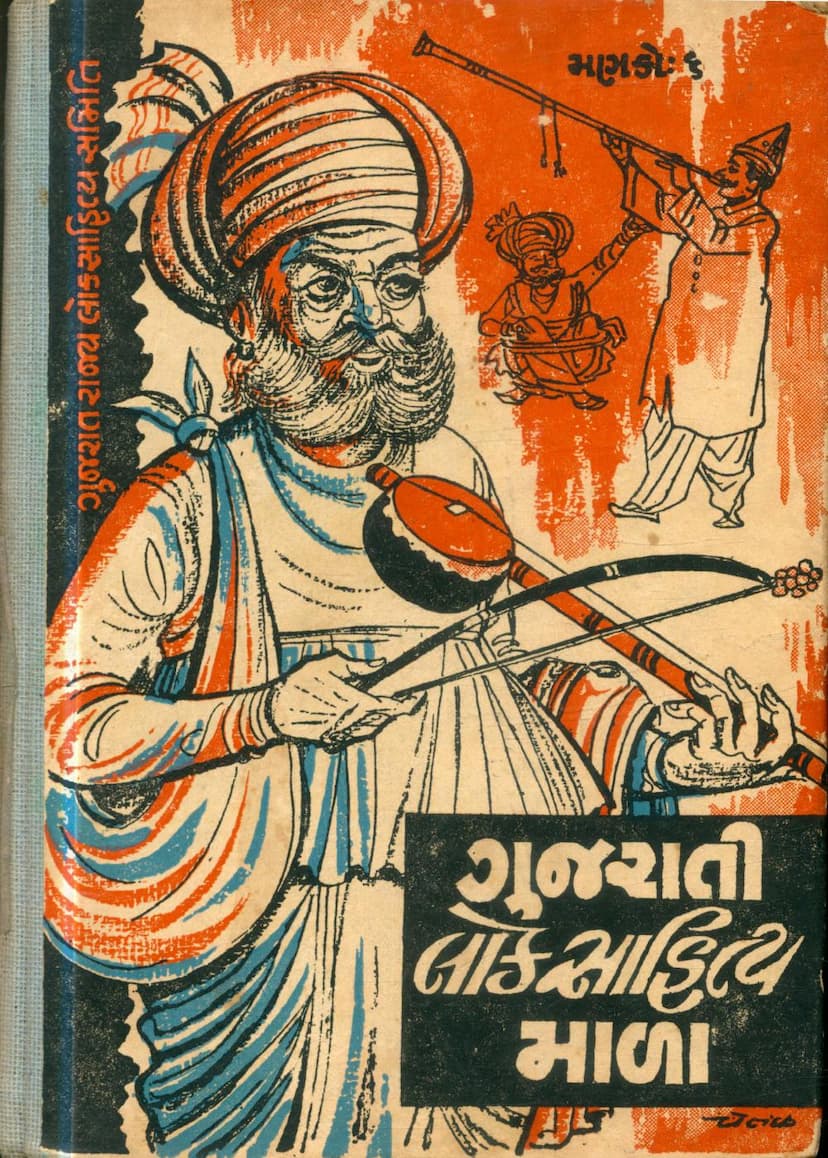Gujarati Lok Sahitya Mala
Added to library: September 1, 2025

Summary
This document is a summary of "Gujarati Lok Sahitya Mala, Vol. 6," a publication by the Gujarat Rajya Loksahitya Samiti (Gujarat State Folklore Committee), published in 1967. Edited by Manjulal R. Majmudar, Bachubhai Rawat, and Manubhai Jodhani, it is part of a series aimed at collecting and preserving Gujarati folk literature.
The book is described as "Mankho Chhatho" (the sixth installment) of the Gujarati Lok Sahitya Mala. The introductory sections (pages 4-6) emphasize the rich and diverse nature of Gujarati folk life, deeply rooted in nature and reflecting a harmonious blend of devotion, power, and beauty. It highlights that folk songs and music arise organically from the daily lives and activities of people, created for their own joy and expression rather than for external appreciation. The text credits the poet Narmad for pioneering efforts in collecting and editing various forms of Gujarati folklore, including children's songs, wedding songs, lamentations, and elegies. The introduction also mentions the ongoing efforts of the Folklore Collection Committee to publish scholarly research on specific themes within folk literature and expresses hope for continued support from the Gujarat state government for these activities. A significant development noted is the inclusion of "Gujarati Folklore (from the perspective of literature and the society it reflects)" as a subject in the M.A. Gujarati curriculum at Sardar Vallabhbhai University. The editor also expresses satisfaction with Manubhai Jodhani's dedication and regret regarding the lack of consistent support from other committee members.
The bulk of the book, starting from page 7 onwards, is a detailed index and collection of various Gujarati folk songs categorized by region and theme. The provided text showcases numerous song titles and their lyrics, demonstrating the vast scope of the collection. Some of the highlighted regional and thematic sections include:
- Bardada region folk songs (pages 18-41), featuring a wide range of lyrical content, from daily life narratives to mythological themes.
- Mevasa region folk songs (pages 78-95), focusing on songs related to Krishna and Radha, as well as other divine figures, often depicting relationships and everyday experiences.
- Jasma's Rasdas (pages 94-114), a significant section detailing the legend and songs of Jasma, likely a folk heroine.
- Sadhra-Jesang's Rasdas (pages 115-119), another collection of narrative songs.
- "Our Folk Songs" (pages 120-149), a diverse compilation covering various themes like enchantments, festivals, and marital life.
- Mehsana district folk songs (pages 157-160), presenting local lyrical traditions.
- Saurashtra folk songs (pages 161-178), including lullabies and songs depicting divine love and devotion.
- Mahua region folk songs (pages 179-182), featuring songs related to the farmer's life and devotional themes.
- Wadhwan region folk songs (pages 183-199), reflecting the life and struggles of the people, including historical events like the 'Chhappaniya' famine.
- Chunval region folk songs (pages 200-205), including themes of divine encounters and marital life.
- Nalkanth's Harijan folk songs (pages 206-219), showcasing the specific traditions of the Harijan community.
- Bhal region folk songs (pages 220-249), touching upon themes of daily life, social customs, and historical narratives.
- "Some Story Songs" (pages 227-237), featuring longer narrative songs like those of Raja Harishchandra, Bhaibahan, and Rani Rupande.
- Zalawad region folk songs (pages 238-250), presenting a variety of lyrical themes.
- Surat district folk songs (pages 251-257), including agricultural and seasonal songs.
- Kharapat region folk songs (pages 258-263), featuring songs of travelers and memories.
The publication is a valuable resource for understanding the breadth and depth of Gujarati folklore, preserving regional variations and thematic elements that form the cultural tapestry of Gujarat. The inclusion of regional songs from Bardada, Mevasa, Saurashtra, Zalawad, and other areas highlights the committee's dedication to capturing the diverse voices of Gujarati folk expression.